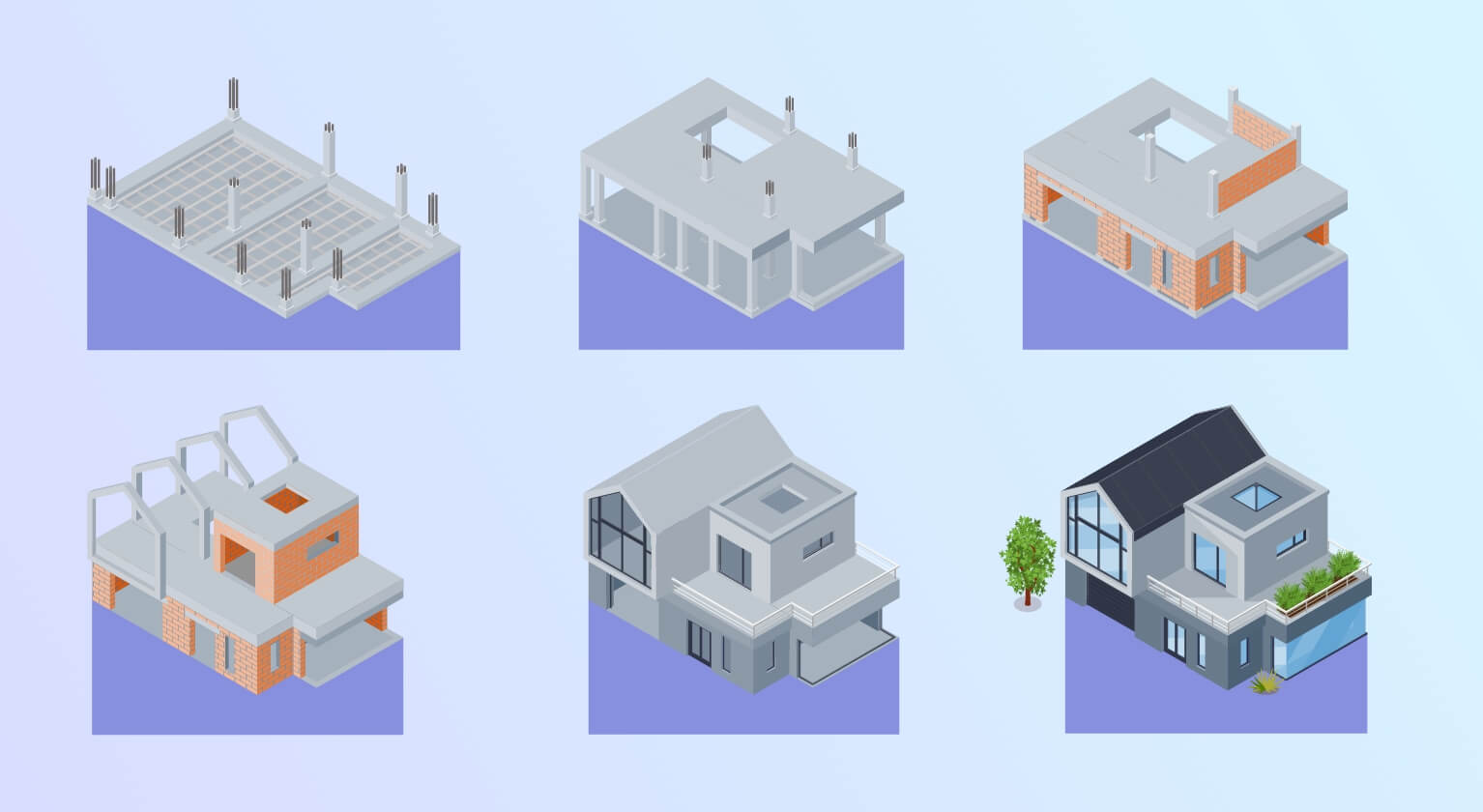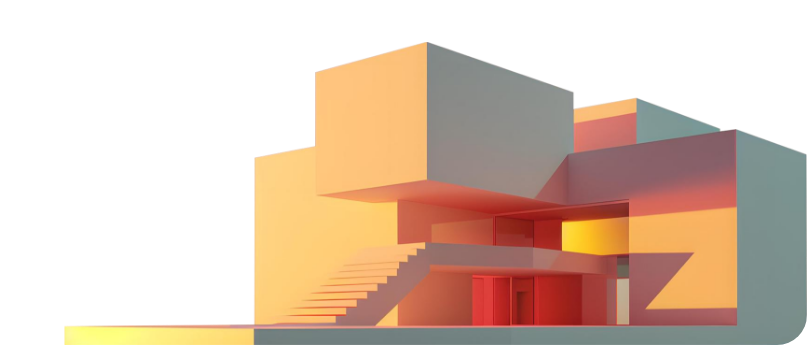 Moin Khan
Moin KhanUnderstanding Briefly about BIM Level of Development
 Moin Khan
Moin Khan
Send Us Your Requirement
The detail level of Building Information Modeling can range from a broad geometric representation to constructing an accurate as-built model. To complete a project successfully, everyone must speak the same language because the difference in comprehension will cause issues, errors, and risks in constructing the actual facility. It is critical and vital to have a better method of conveying needs amongst project owners, designers, contractors, architects, engineers, and so on. That method is known as the Level of Detail (LOD). LOD is a method for disciplines to convey their needs to one another and form a streamlined workflow to avoid and minimize the scope of miscommunication that can cause potential errors or risks.
What is LOD?
LOD (Level of Detail) is a concept with varying definitions and implementations that determines the content and dependability of BIM modeling parts at various stages or milestones. The geometric information, structured data, and supporting documentation are content. A BIM services level of development denotes the amount of information related to concrete project development required for making tangible decisions and avoiding potential risks while building the facility. The degree of detail includes all the information provided in the BIM modeling services.Accurate BIM LOD Models for your next Project
Get a Quote
For construction project execution with precision and high quality, BIM level of detail offers insights to the completion of the project. This also enhances the communication, collaboration and minimizes the scope of errors in the early stage of designing. Other than that, it not only includes graphical or physical components but also associates with data that helps architects, engineers and other collaborators to understand the progress on the aspects of cost, time and material takeoff.
Benefits of LOD
LOD specification enables AEC professionals to prescribe and explain building information models with high clarity and consistency at various phases of the design and construction process. The LOD structure tackles the difficulties AEC professionals face by offering an industry-developed standard to identify the level of development of multiple BIM modeling services systems. By supporting the thorough characterization of BIM deliverables, the standard improves consistency in project communication execution and delivers the desirable outcomes. However, any construction project consists of various phases with different sets of people involved with different sets of work approaches and other aspects. Initially in 2008, the American Institute of Architects established five BIM level of detail that specify the amount of detail of the BIM model. However, as the continuous development and advancement in technology, experts published six levels of development in 2013. Let’s explore them in detail.
Types Of LODs
Types Of LODs
Conceptual Design
Schematic Design
Detailed Design
Greater Details And Construction Documentation
Manufacturing and Installation
Greater Details and Construction Documentation
LOD 100 – Conceptual Design
The execution of LOD 100 indicates the beginning of the project. It is one of the conventional conceptual design phases. This level assists in delivering the tangible information required for a project’s success. In other words, a LOD of 100 elements does not display information like sizes, shapes, or precise positions. Other components may provide more detailed information on LOD 100 pieces, but this is only an estimate.
LOD 200 – Schematic Design
LOD 200 is considered when developing the project’s design and model. It is the phase that aids in transforming the model’s conceptual design. This model can also be used to generate construction documentation. In layperson’s terms, this is the most extended phase of the project because the model must go through classic and modern architectural design development efforts. LOD 200 elements are more complex than LOD 100 features because they use placeholders with characteristics like dimensions, shapes, and locations. Non-geometric data can be linked to LOD 200 objects as well.
LOD 300 – Detailed Design
When obtaining the project’s model, LOD 300 is used. It is the technique of graphically representing the element in the model. The model’s representation is used to get quantity, size, shape, location, and orientation information. This will be carried out with the non-geographical information related to the model element. Despite being graphic representations, the geometry and physical properties of LOD 300 entities appear realistic at this level. In other words, the LOD 300 models’ information can be utilized in the construction process.
LOD 350- Greater Details And Construction Documentation
The information in LOD 350 elements is the same as in LOD 300. However, they also interact with other architectural components, such as supports and connections. The component’s location and relationships with other building systems are depicted in a 350 model.
Manufacturing and Installation LOD 400
LOD 400 is possible because of the model’s manufacture and assembly. This is the technique that was obtained directly from the BIM modeling services. To organize and coordinate project phases, the LOD 400 approach is employed. In addition, simply put, BIM level of detail 400 is the development of a BIM model based on assemblies, fabrication and detailed information in the generated BIM model. However, many CAD systems are used to build and construct this manufacturing model. The technology and fabrication level required for the project are not the same.
LOD 500 – As-Built
LOD 500 corresponds to the As-Built Modeling Stage, when elements are constructed as built assemblies for maintenance and operations. Shape, size, position, amount, and orientation are examples of non-geometric information that can be related to modeled elements. The final stage of the project includes all necessary building elements. It is the stage that is finished once the construction is finished. When the project is completed, it is turned over to the facility managers, who maintain the building’s life-cycle management records.
LOD 500 models are precise, field-verified representations of completed building components. Facility managers can utilize the 500 pieces as a reference for operation and maintenance because they describe the present installation. Furthermore, it is claimed that employing LOD is more precise and accurate. The higher the LOD, the more detailed the result.
Why LOD 500 is So Important
LOD 500 is the final stage of the BIM services process. It is the stage after the completion of the construction projects when the owner will begin observing the movement of the job and keeping an eye on the dream becoming a reality. The “As-Built” stage refers to the ultimate step of the project. Each of us is familiar with the BIM modeling services process and its many stages of growth. Furthermore, it is a reality that the construction project is completed and valuable with these processes and settings. As a result, it is critical to adapt to and follow each stage to achieve 100% correctness and precision in work.
Conclusion
In conclusion, the Level of Development (LOD) Specification is effective for achieving a Building Information Modeling (BIM) level. The LOD standard can ensure that project teams are all on the same page regarding the depth and accuracy of the information expected in a BIM model by giving explicit definitions and illustrations of BIM elements at different stages of development. This can result in a more efficient and smooth construction process and a more accurate and complete BIM model. To ensure the success of your projects, you must understand and use the LOD Standard as a BIM specialist.
UniquesCadd is the leading BIM outsourcing services firm that follows all of the essential codes, international standards, and software for the fulfillment of BIM LOD500 Services. We know how to use the Level of Development (LOD) Standard to ensure that the BIM models built are accurate and complete at all phases of the design and construction process.






